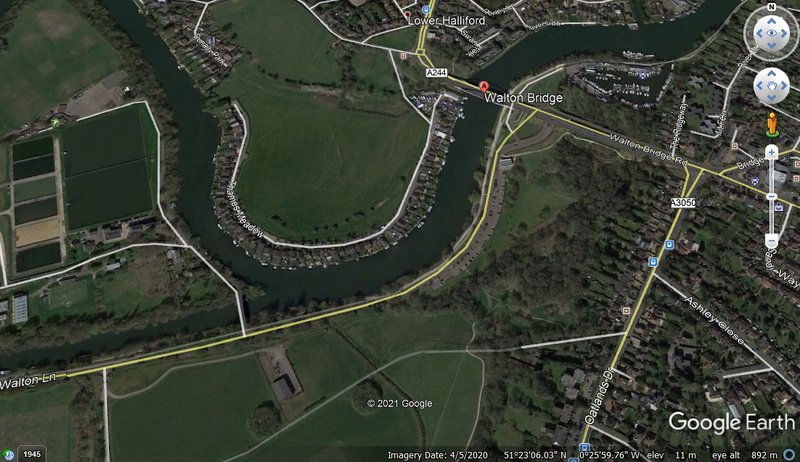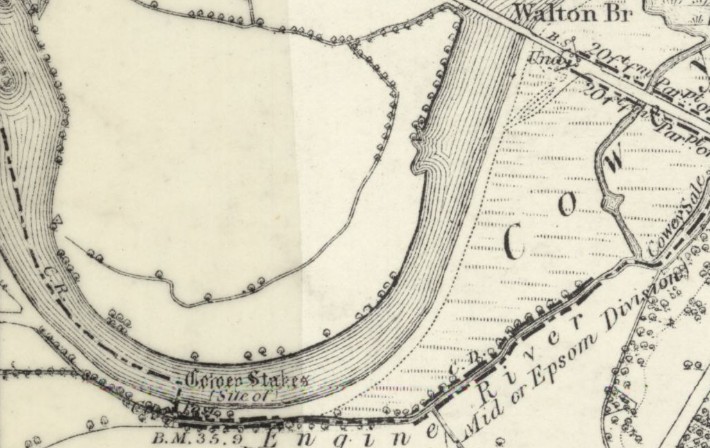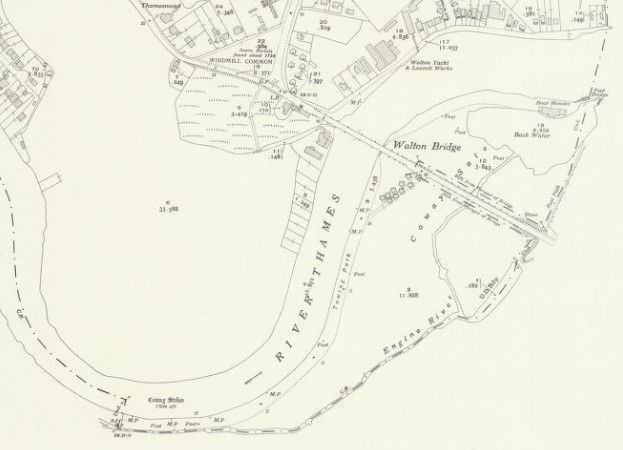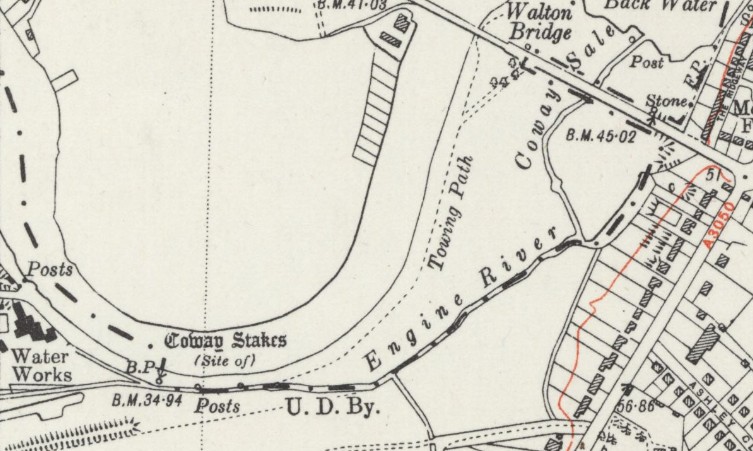To diverge from Nicola's secondary sexual characteristics for just a moment...
Here is the area that
@Damien has pinpointed as the locus of Frank's experience:
I went to my trusty source of reference material, the
National Library of Scotland's peerless map collection, and looked at a few hoping, as always, to discover that the incident took place at "Drowned Lass Wharf", or "Water Nymph Pool": as usual, no such luck. Here are maps from the Ordnance Survey:
1864-1870
1934
1938
The only thing that I could see that was out of the ordinary was the feature at lower left: "Coway Stakes". Intrigued, I consulted Google, where I found a reference to this book:
Old England: A Pictorial Museum of Regal, Ecclesiastical, Municipal, Baronial and Popular Antiquities
by Charles Knight, London, 1845
Knight has this to say, quoting the English topographer Camden:
"In noticing the two descents of Cæsar upon Britain (page 26) we said, “From the nature of his inroad into the country, no monuments exist, or could have existed, to attest his progress.” But there is a monument, if so it may be called, still existing, which furnishes evidence of the systematic resistance which was made to his progress. Bede, writing at the beginning of the eighth century, after describing with his wonted brevity the battle in which Cæsar in his second invasion put the Britons to flight, says, “Thence he proceeded to the river Thames, which is said to be fordable only in one place. An immense multitude of the enemy had posted themselves on the farthest side of the river, under the conduct of Cassibelan, and fenced the bank of the river and almost all the ford under water with sharp stakes, the remains of which stakes are to be there seen to this day, and they appear to the beholders to be about the thickness of a man’s thigh, and being cased with lead, remain immoveable, fixed in the bottom of the river.”
OK: Bede the Venerable mentions these stakes (Ecclesiastical History of England, Chapter II, page 10) in the eighth century. How about Caesar himself?
"XVIII.—Caesar, discovering their design, leads his army into the territories of Cassivellaunus to the river Thames; which river can be forded in one place only, and that with difficulty. When he had arrived there, he perceives that numerous forces of the enemy were marshalled on the other bank of the river; the bank also was defended by sharp stakes fixed in front, and stakes of the same kind fixed under the water were covered by the river. These things being discovered from [some] prisoners and deserters, Caesar, sending forward the cavalry, ordered the legions to follow them immediately. But the soldiers advanced with such speed and such ardour, though they stood above the water by their heads only, that the enemy could not sustain the attack of the legions and of the horse, and quitted the banks, and committed themselves to flight."
Julius Caesar, De Bello Gallico, Bk.V, Ch.xviii
So: Caesar describes stakes, Bede quotes Caesar, Camden mentions them in Elizabeth's reign and Knight confirms that Coway Stakes is the very place mentioned by Camden here:
"Caesar then marched with is army to the river Thames, and so to the confines of Cassivelaunus. Upon the further banke of this river, yea and under the water, they had covertly stucke sharpe stakes, and embatteled themselves with a great power. But the Romanes went and waded over which such violence, notwithstanding they had but their heads cleere above the water, that the enemy was not able to endure the charge, but left the bank, and betoke themselves to flight..."
Camden, Romans in Britaine 1, Ch.v
Let's get woo: this sighting was of a water spirit, still seething from Caesar's defeat of her people at Coway Stakes and condemned to haunt the site until...
...she can beguile, entrap and do away with someone from Caesar's land as revenge. Where is Frank's ancestral home? Sicily.
Mic drop.
maximus otter






